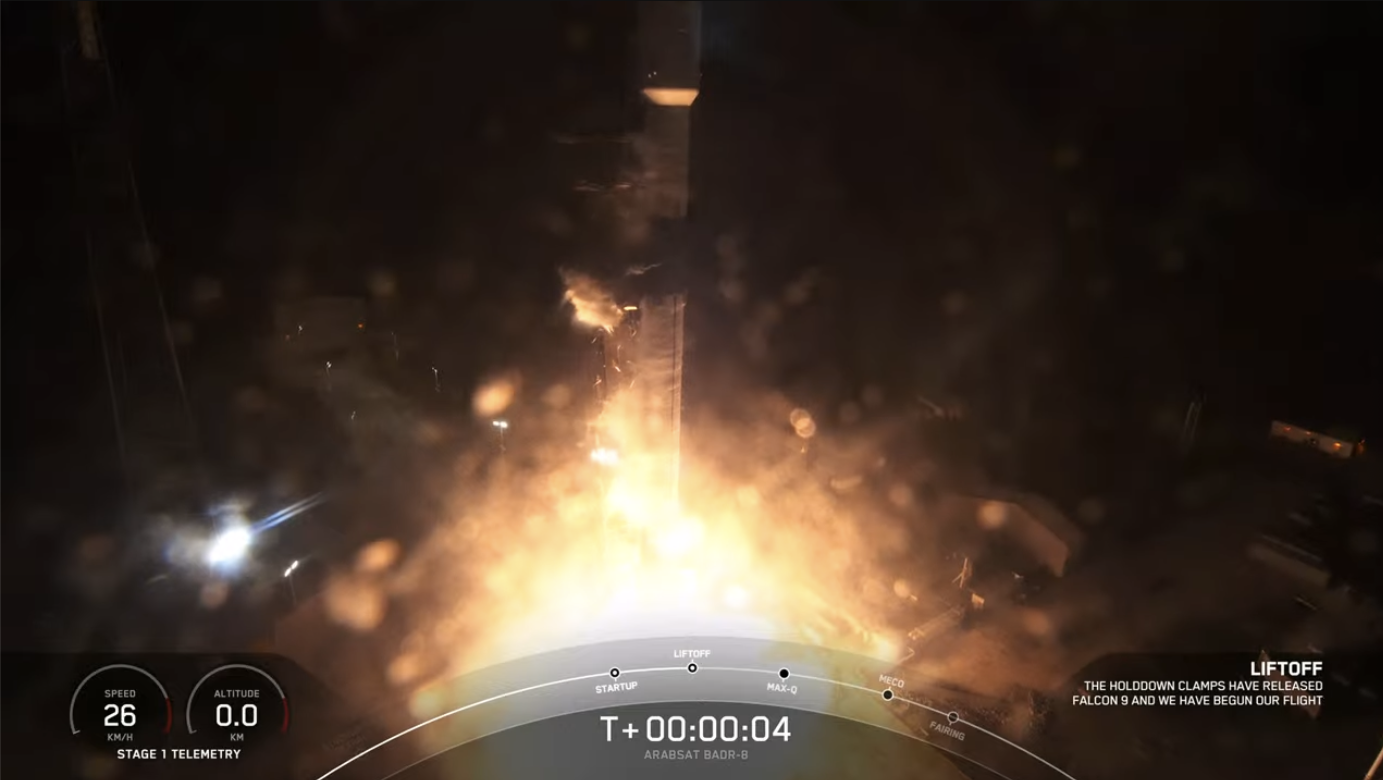
As two Saudi Arabian astronauts—including its first female space traveler—settle into life aboard the International Space Station (ISS), a fleet-leading Falcon 9 lifted a powerful geostationary communications satellite uphill on behalf of the kingdom just past midnight on Saturday. Veteran B1062, making her 14th flight, rose from storied Space Launch Complex (SLC)-40 at Cape Canaveral Space Force Station, Fla., at 12:30 a.m. EDT Saturday for SpaceX’s seventh Falcon 9 launch of May.
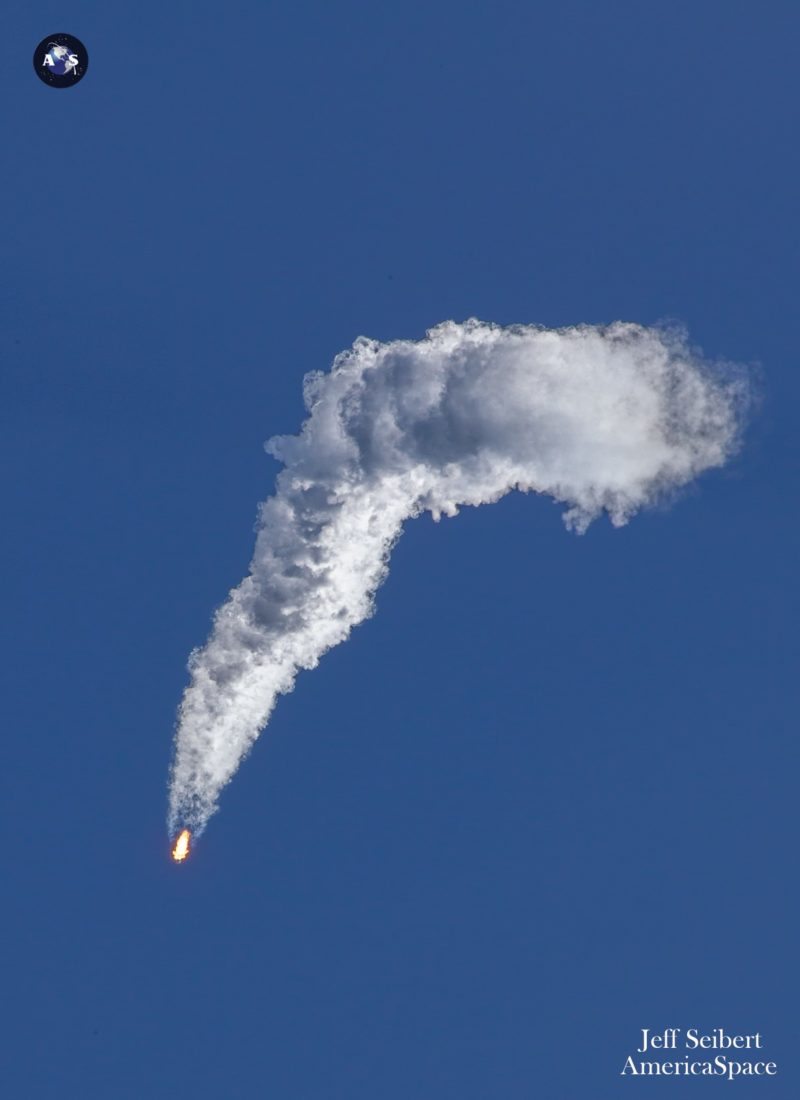
It marked the third attempt to get this mission airborne, having been twice scrubbed on Tuesday and Wednesday, due to poor weather at the Cape. As the Probability of Go (PGo) hovered no higher than 20 percent, SpaceX teams elected to stand down until closer to the weekend, with conditions expected to improve to 40-percent-favorable by Friday night and 80-percent-favorable by Saturday evening.
In wrapping up the 14th mission of her career, B1062 becomes only the fourth booster to have reached this high number of flights and sits just behind her sisters B1058—first used to launch “Bob and Doug” on their historic Demo-2 mission in May 2020—and B1060, both of which reached their record-tying 15th launches in mid-December and early January, respectively. Since then, the active status of B1058 and B1060 has been paused as both have now attained the maximum number of certified flights, although it is believed that SpaceX are in the final stages of certifying both boosters for up to 20 launches.
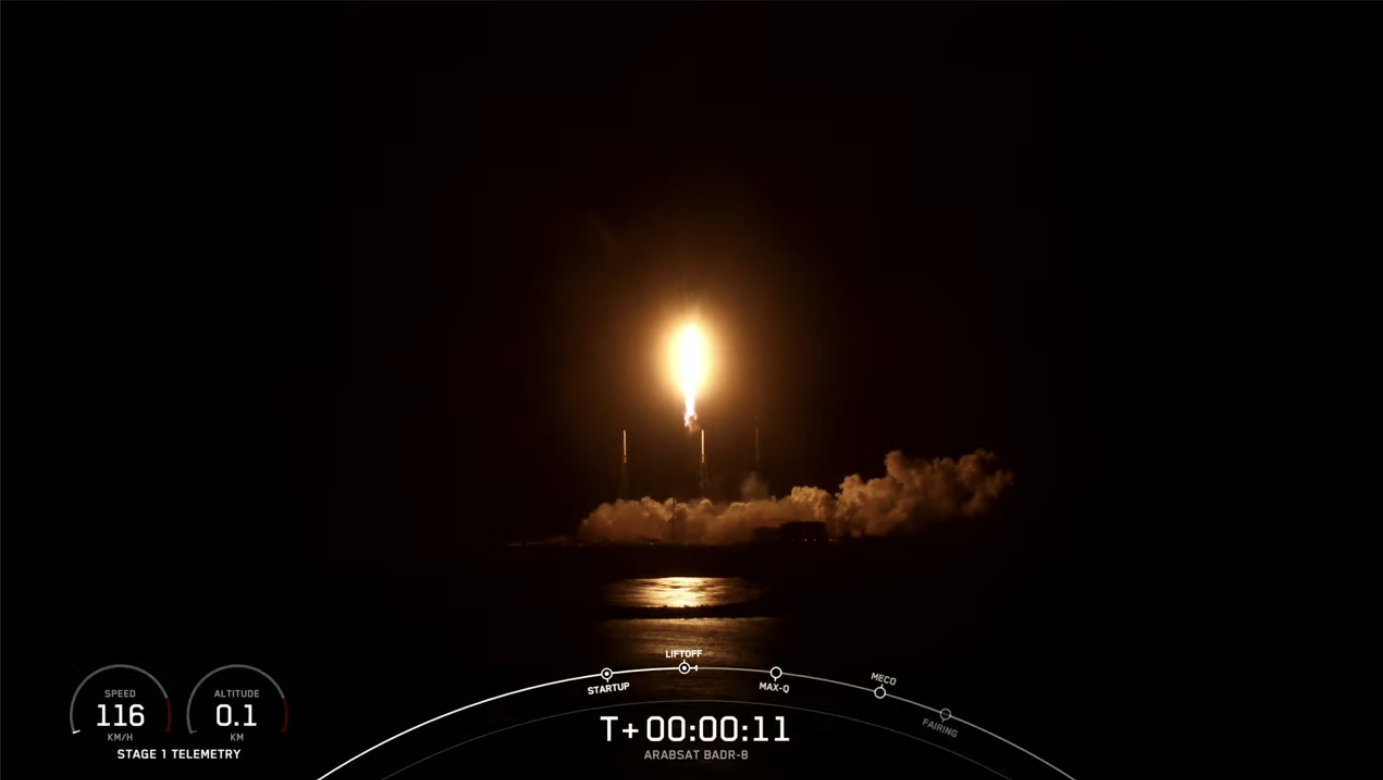
Until such confirmation comes, B1062 tonight became the most-flown “active” operational Falcon 9. She entered service in November 2020, when she lifted the fourth Block III Global Positioning System (GPS III-04) satellite uphill, followed by GPS III-05 the following June.
More recently, she flew the historic, all-civilian Inspiration4 crew of Shift4Payments billionaire Jared “Rook” Isaacman and crewmates Sian Proctor, Hayley Arceneaux and Chris Sembroski aboard Dragon Resilience in September 2021 and went on to log eight missions in 2022, the highest number of launches ever attained by a single booster in a single calendar year. Notably, she flew twice in April 2022 alone, setting a new empirical record of only 21 days between launches by the same orbital-class booster.
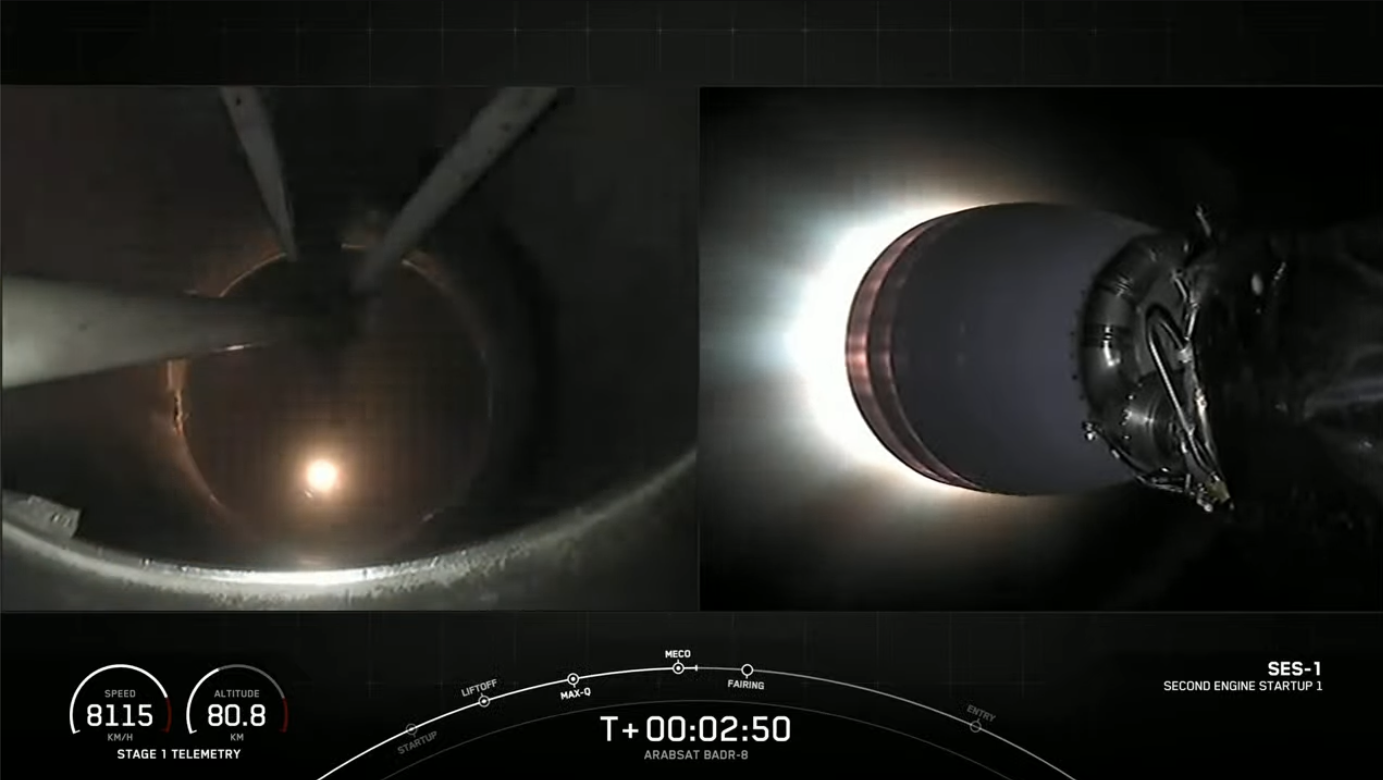
The first of those launches carried Dragon Endeavour and Ax-1 crewmen Mike Lopez-Alegria, Larry Connor, Mark Pathy and Eytan Stibbe on the first leg of their 17-day mission to the ISS for Houston, Texas-based AxiomSpace, Inc. Including today’s launch, B1062 has also launched over 370 Starlink internet communications satellites, 40 OneWeb broadband satellites and Egypt’s powerful Nilesat-301 geostationary satellite into orbit.
After a relatively quiescent start to May—with “only” three Falcon 9 launches in the month’s first half—SpaceX has dramatically picked up the pace in recent days, flying four missions virtually back-to-back in a week. Flights last weekend delivered satellites aloft for Starlink, Iridium NEXT, OneWeb and more recently Dragon Freedom with her Ax-2 crew of Commander Peggy Whitson, Pilot John Shoffner and Saudi Arabia’s Ali Al-Qarni and Rayyanah Barnawi, bound for a ten-day research expedition to the ISS.
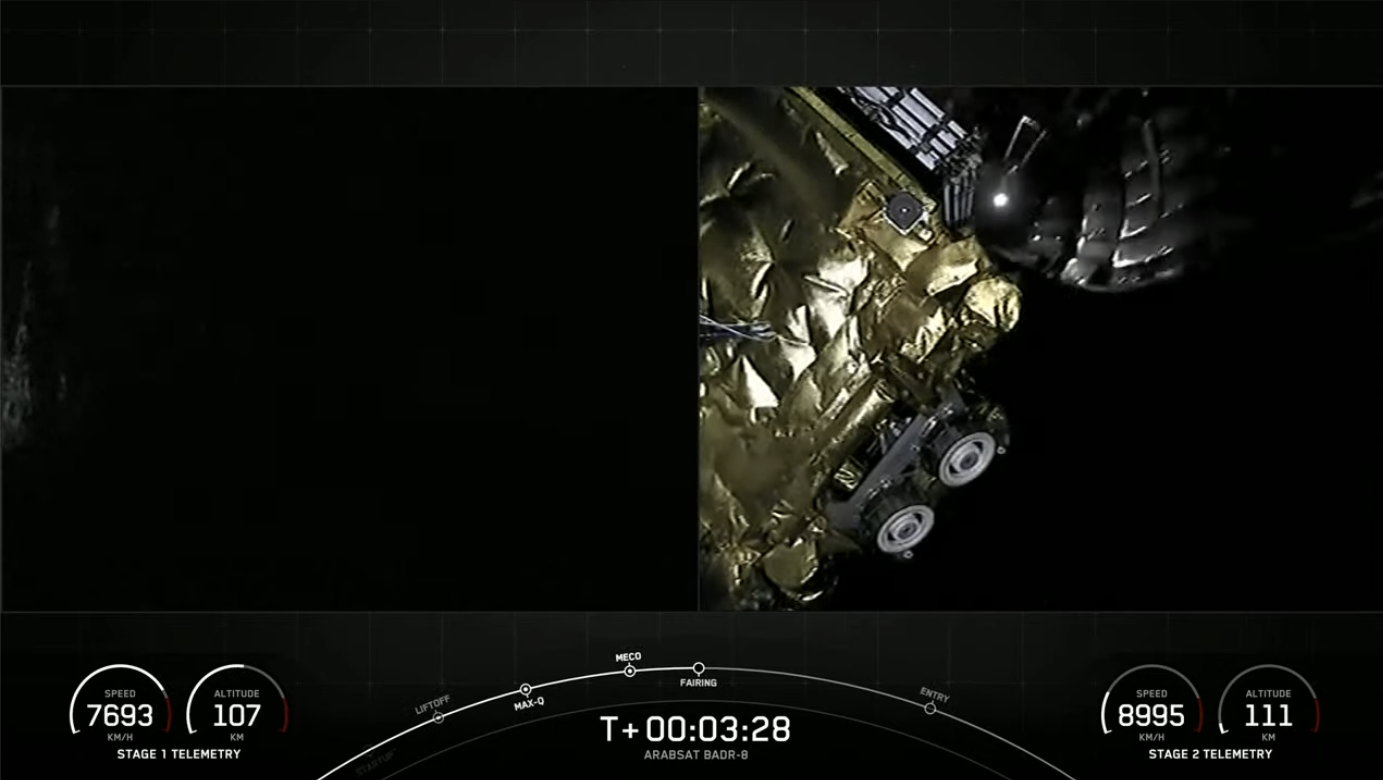
Ax-2, flying on behalf of Houston, Texas-based AxiomSpace, Inc., marks the first time that any Saudi astronaut has traveled to the station. Al-Qarni becomes the second male Saudi space traveler, following in the footsteps of Prince Sultan Salman Abdul Aziz Al-Saud, who flew aboard shuttle Discovery in June 1985, whilst Barnawi becomes the first Saudi female astronaut and Whitson the first woman to command a Commercial Crew mission.
Following their 5:37 p.m. EDT launch on Sunday, Dragon Freedom docked autonomously at the space-facing (or “zenith”) port of the station’s Harmony node at 9:12 a.m. EDT Monday, only 15 hours and 35 minutes after liftoff. This marked the quickest launch-to-docking of any Crew Dragon flight so far, just eclipsing the 15 hours and 45 minutes it took Dragon Freedom and her Crew-4 astronauts to reach the ISS in April of last year.
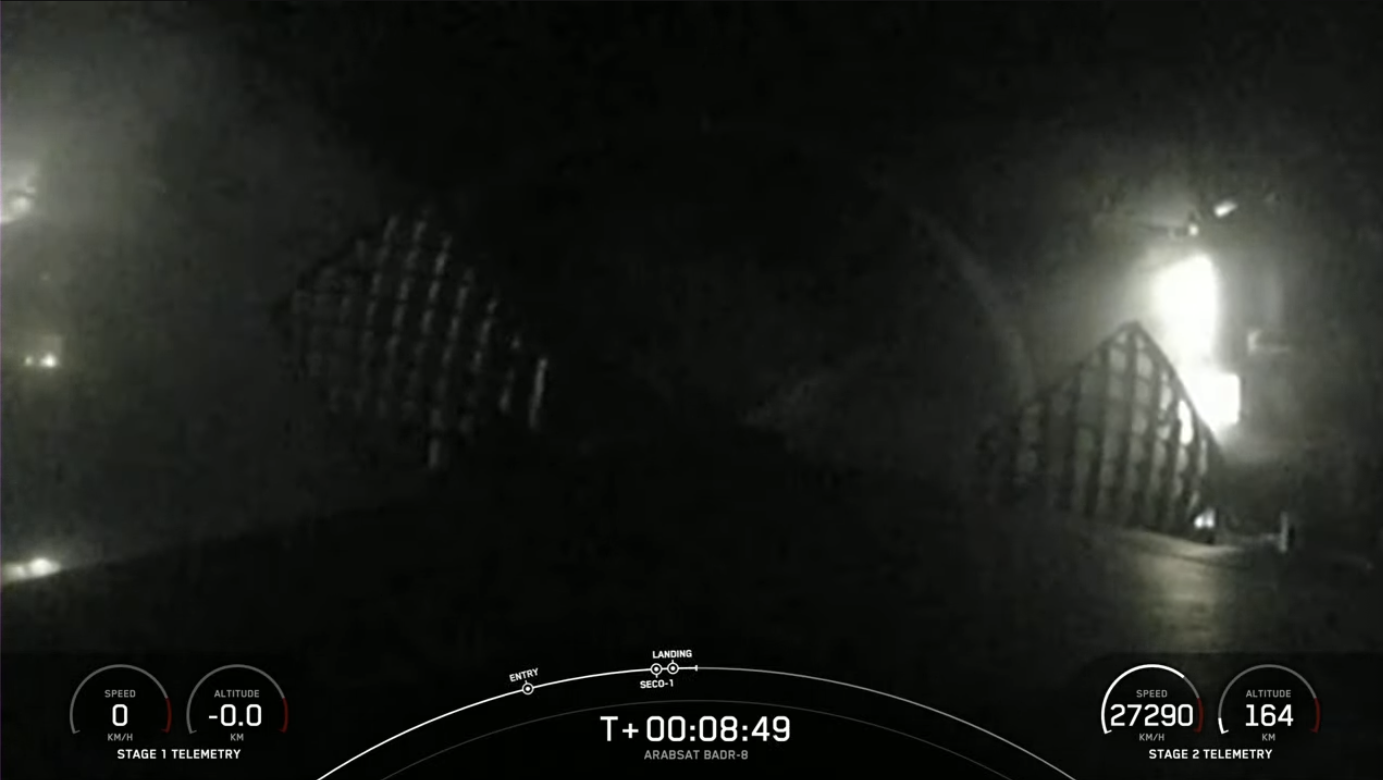
After standard pressurization and leak checks, hatches into the sprawling orbital complex were opened around 11 a.m. EDT Monday, to be welcomed by the Expedition 69 crew of Commander Sergei Prokopyev, his Russian crewmates Dmitri Petelin and Andrei Fedyayev, U.S. astronauts Frank Rubio, Steve Bowen and Warren “Woody” Hoburg and Sultan Al-Neyadi of the United Arab Emirates (UAE). Current plans are for Whitson, Shoffner, Al-Qarni and Barnawi to remain aboard the ISS until 30 May, when Dragon Freedom will undock and return to a parachute-assisted splashdown off the Florida Coast.
It was therefore somewhat fitting with as many as two Saudi astronauts together in orbit for the first time that the kingdom’s next-generation communications satellite should spear uphill only a day or two later. The 10,000-pound (4,500-kilogram) Arabsat-7B—also known as “BADR-8”—has a total payload power of 17.8 kilowatts and is targeting a 15-year active operational lifetime at 26 degrees East longitude.
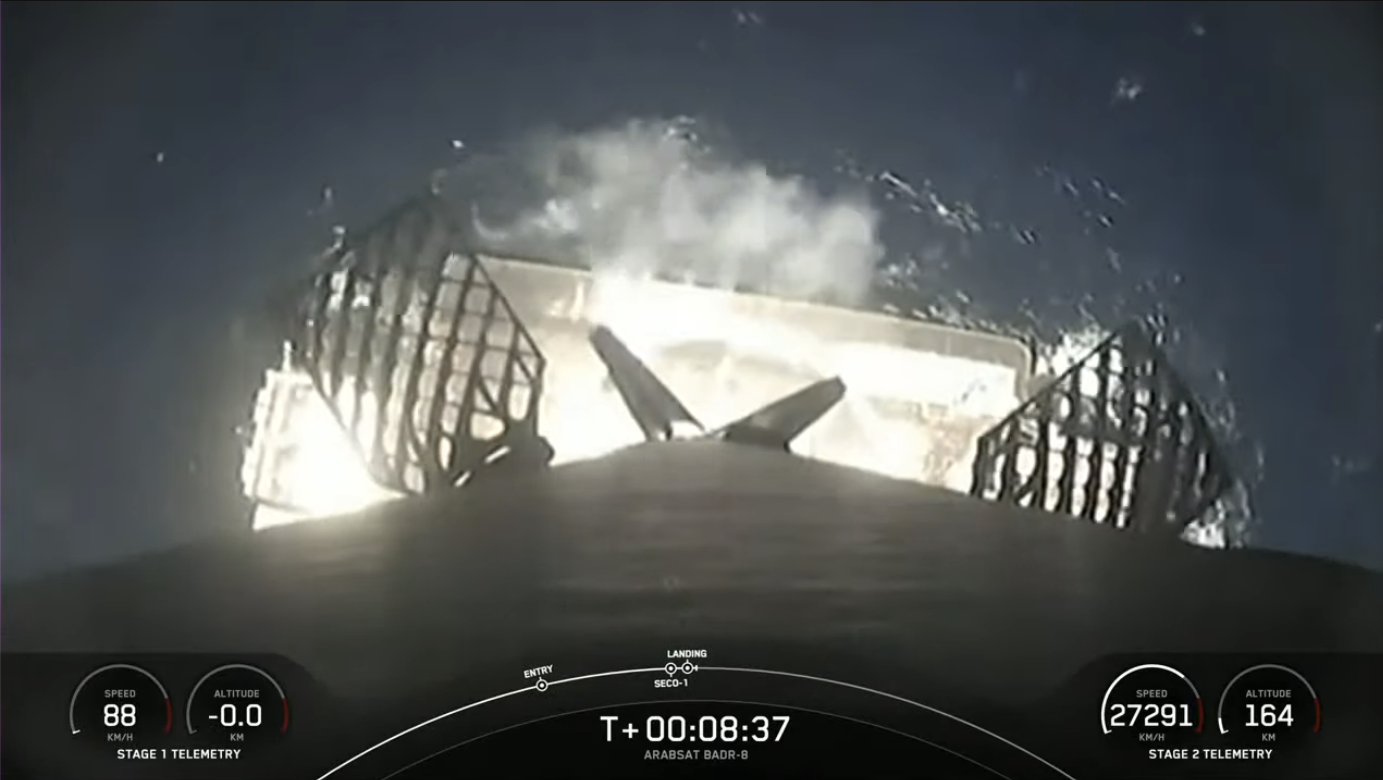
The giant satellite was built by Airbus, with contracts having been awarded in August 2020. Its on-board electric propulsion system is expected to allow it to reach its geostationary orbital “slot” in four to five months. Arabsat 7B also includes Airbus’ TELEO optical communications payload demonstrator, intended to facilitate very high-capacity analog optical feeder-link communications and support a new generation of optical communications technologies for future missions, with a high resistance to electronic jamming.
Arabsat 7B was flown to the launch site last month, where it was fueled and readied for encapsulation into the Falcon 9 payload shroud. In the meantime, the Autonomous Spaceport Drone Ship (ASDS), “Just Read the Instructions”, put to sea out of Port Canaveral last weekend, bound for a recovery position some 420 miles (680 kilometers) offshore in the Atlantic Ocean to pick up B1062 from her latest mission.
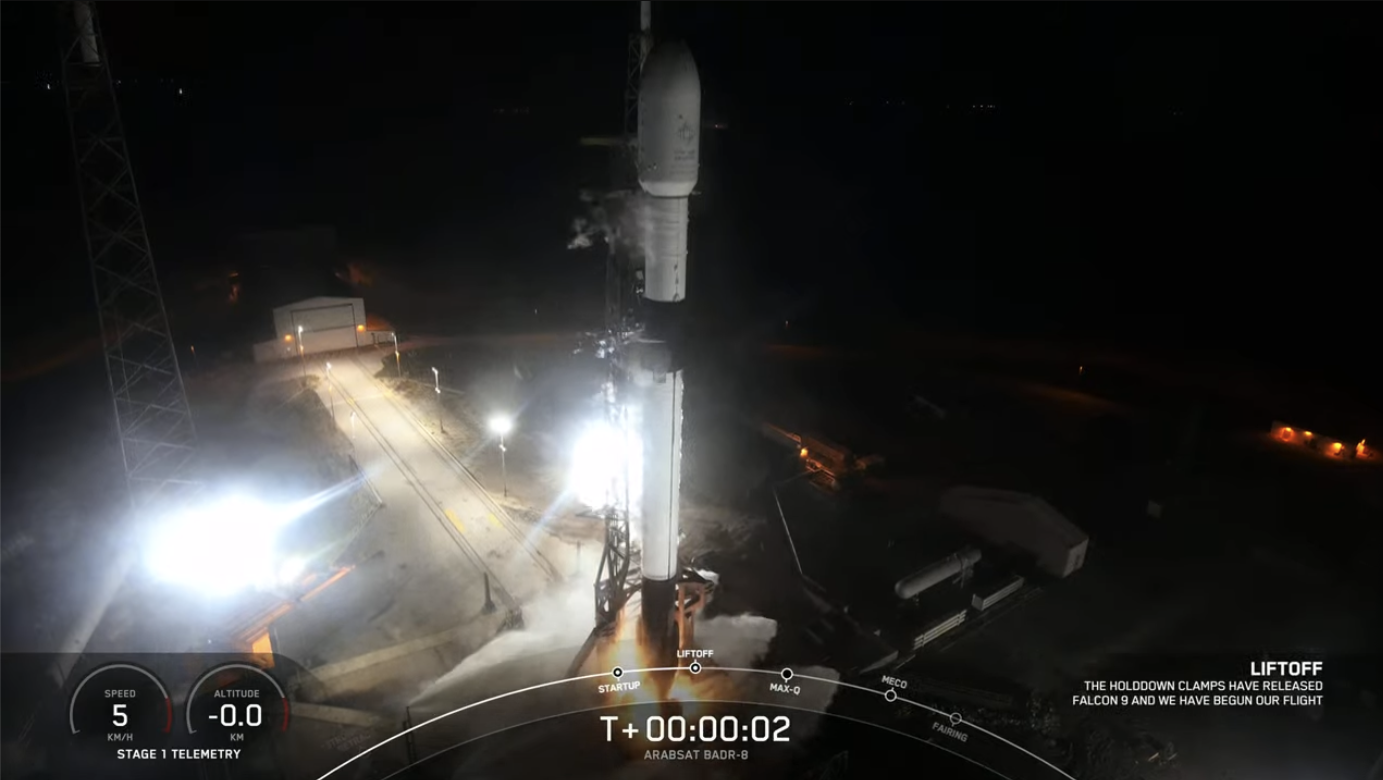
Weather, as it was for Ax-2’s pair of launch attempts on Sunday and Monday, remained the overarching concern, as Florida heads into its storm season. According to the 45th Weather Squadron at Patrick Space Force Base, the outlook for Tuesday’s prime T-0 at 11:25 p.m. EDT and Wednesday’s backup T-0 at the same time looked to creep no higher than 20-percent-favorable, although both benefited from an expansive “launch window” of 127 minutes on both days.
With “numerous showers and storms” anticipated on Tuesday, exacerbated by a mid-level disturbance, potential concerns included a violation of the Cumulus Cloud Rule, Surface Electric Fields Rule and Anvil Cloud Rule. The same “messy pattern” was also projected for Arabsat-7A’s backup launch date on Wednesday evening, prompting teams to stand down on both days and aim for a 127-minute window opening at 11:25 p.m. EDT Friday.
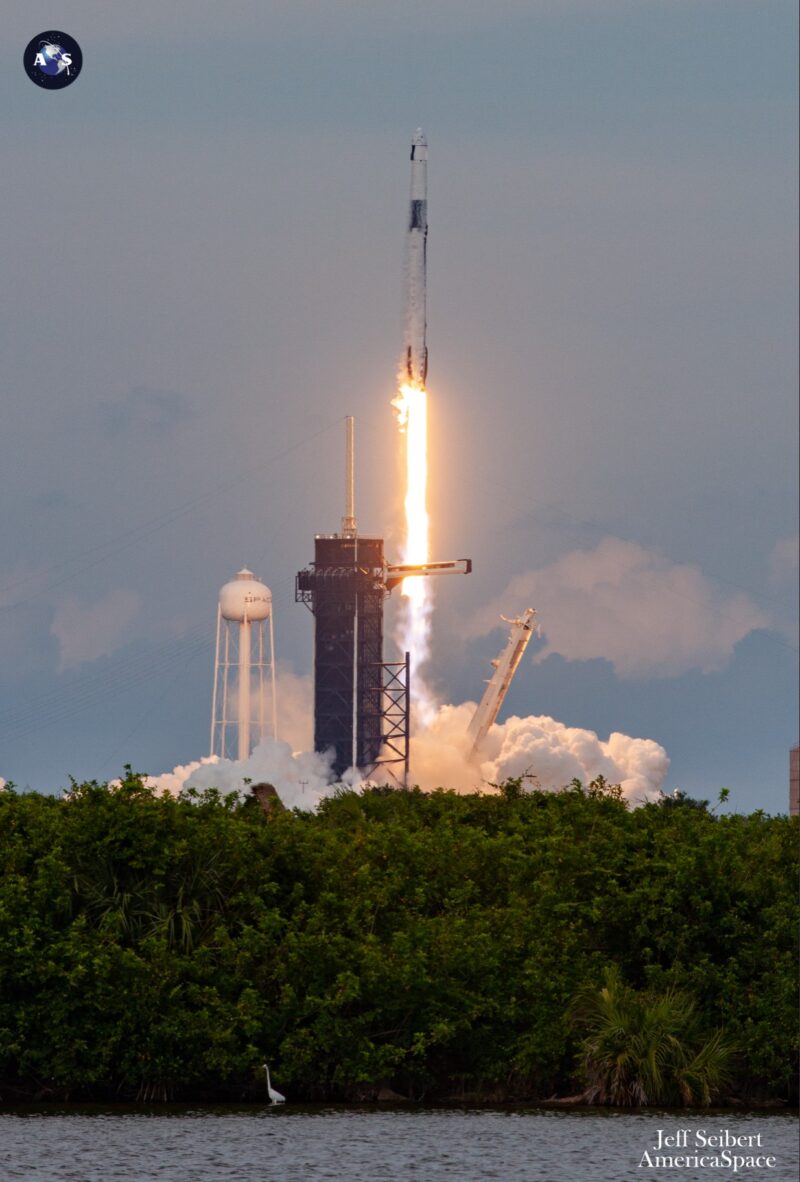
“By Friday, the center of low pressure will be off the coast, to the northeast of the Spaceport,” noted the 45th Weather Squadron on Wednesday. “The low’s position will bring breezy northerly winds, along with bands of scattered coastal showers.
“As a result, the main concerns will be the Cumulus Cloud Rule and the Surface Electric Fields Rule associated with these showers,” it added. Current model guidance should see the Space Coast “breaking out of the wet pattern” by Saturday, as the low pushes northwards and drier air filters in from the north.
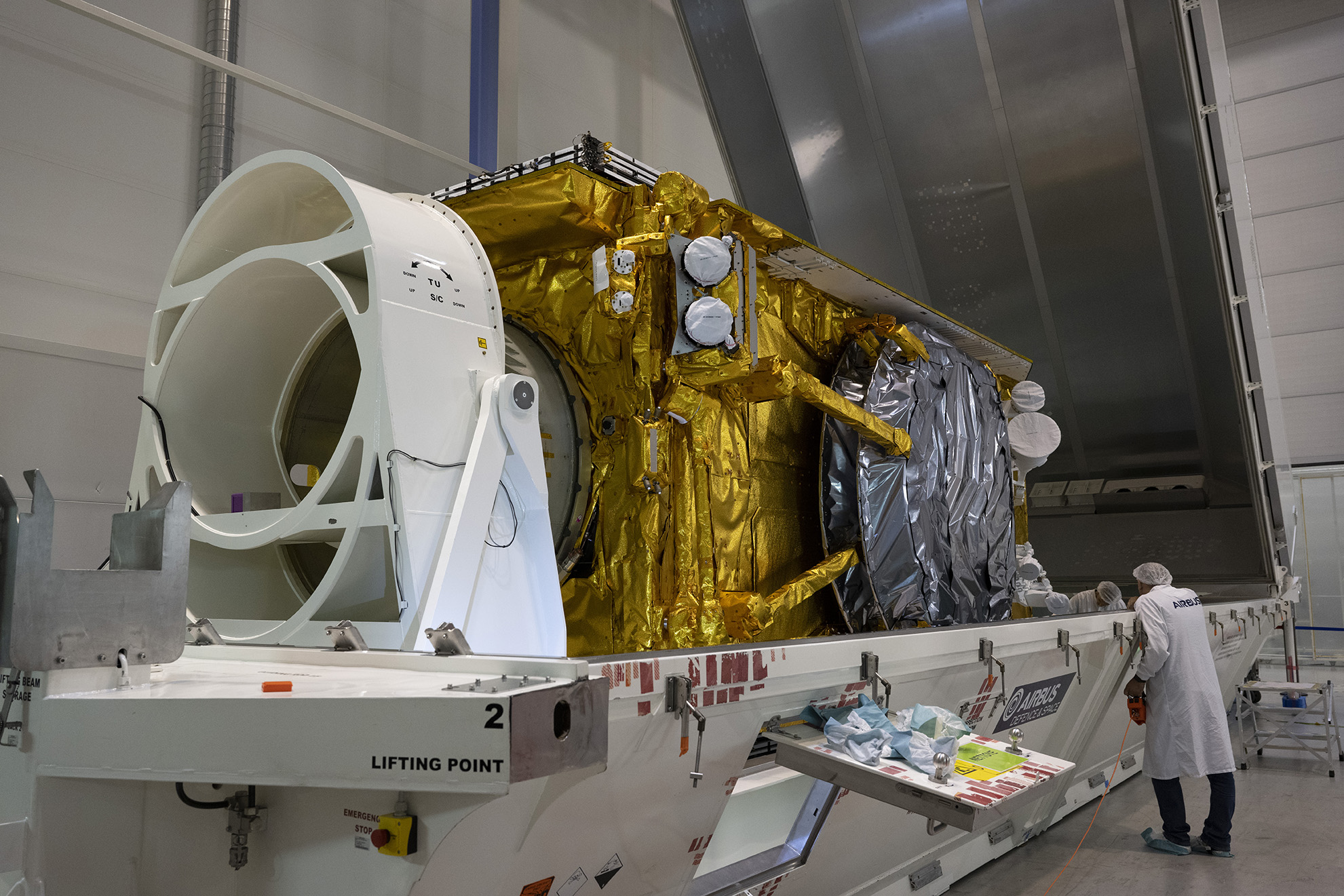
Despite the poor prospects, B1062 sprang aloft at 12:30 a.m. EDT Saturday, about an hour into the window, kicking off SpaceX’s fourth SLC-40 launch of May, and powered smoothly into the Florida darkness. Two-and-a-half minutes later, the veteran core separated from the stack and returned to land on JRTI, as the Merlin 1D+ Vacuum engine of the Falcon 9’s second stage ignited for the first of a pair of “burns” to get Arabsat-7B to its deployment position.
The first burn ran for a standard six minutes, before entered a prolonged period of coasting, ahead of a second, minute-long burn, which was set to occur just shy of a half-hour into the mission. As this story was being prepared, Arabsat-7B was slated to be released at 37 minutes into the flight, becoming the second Saudi Arabian satellite to be safely delivered by SpaceX, following Arabsat-6A on the Falcon Heavy’s first operational mission in April 2019.
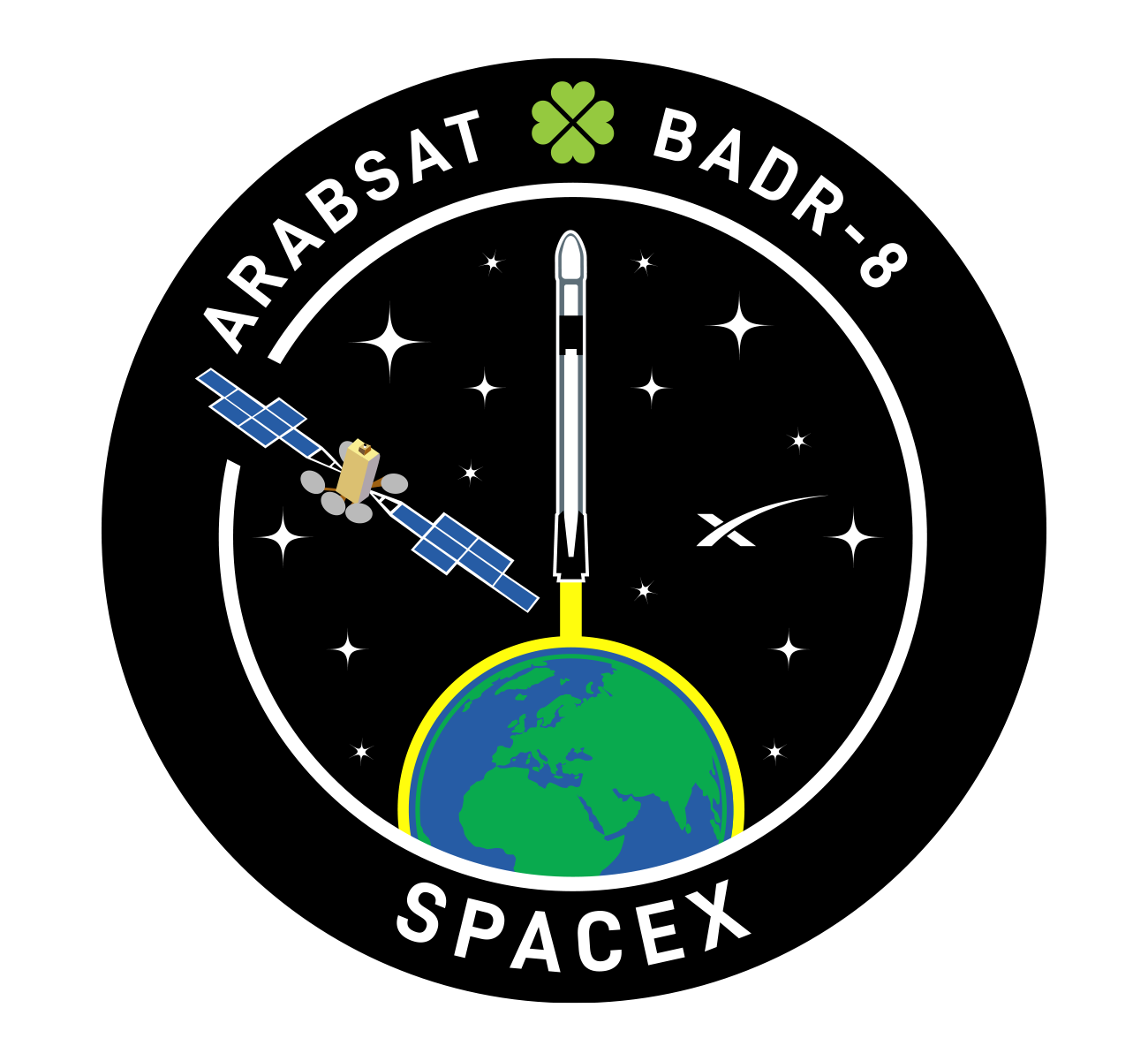
Just last September, Arabsat signed contracts with SpaceX to launch its Arabsat-7A geostationary communications satellite later this decade to an eventual destination at 30.5 degrees East longitude in support of Europe, Middle East and Africa (EMEA) customers. Built by Thales Alenia Space, it is a fully flexible Software-Defined Satellite (SDS), based on the Space Inspire (INstant SPace In-orbit REconfiguration) platform to facilitate “seamless telecom mission and services reconfiguration”, as well as “instant in-orbit adjustment to broadband connectivity demand and superior video broadcasting performance, while maximizing the effective use of satellite resources”.




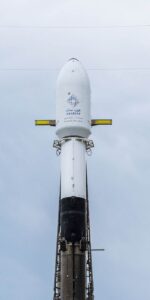
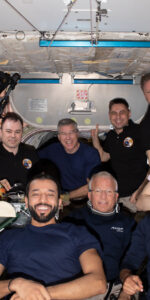
6 Comments
6 Pings & Trackbacks
Pingback:SpaceX Aims for Monday Launch Double-Header - AmericaSpace
Pingback:50th Falcon Mission of 2023 Flies, Falcon Heavy Realigns for Friday Night Launch - AmericaSpace
Pingback:SpaceX Aims for Year’s 70th Falcon 9 Launch Tonight - AmericaSpace
Pingback:SpaceX Launches Year’s 70th Falcon 9, Continues Record-Breaking Year - AmericaSpace
Pingback:SpaceX Launches Year’s 70th Falcon 9, Continues Record-Breaking Year - SPACERFIT
Pingback:SpaceX Aims for Year’s 70th Falcon 9 Launch Tonight - SPACERFIT